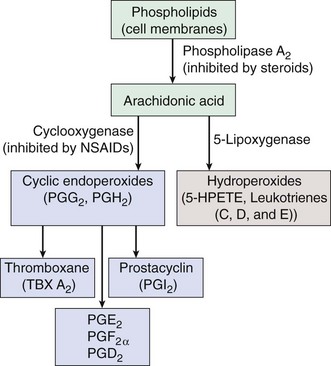2 Pharmacology
Ocular Pharmacology
Pharmacodynamics
the study of the biochemical and physiologic effects of drugs and their mechanisms of action.
Bioavailability
amount of drug absorbed (penetration into ocular tissues)
Routes of Administration
Topical
absorption related to corneal penetration
Anesthetics
Structure
2 classes; do not necessarily have allergic cross-reactivity
Topical
disturb intercellular junction of corneal epithelium (increase permeability)
Parenteral
General
all agents decrease IOP except ketamine, chloral hydrate, N2O, and ether
Autonomic System
Sympathetic
Extensive system for mass response (‘fight or flight’) (Table 2-1)
Table 2-1 Autonomic system responses
| Organ / Function | Sympathetic (fight / flight) | Parasympathetic (homeostasis) |
|---|---|---|
| HR | Increase | Decrease |
| BP | Increase | Decrease |
| GI motility | Decrease | Increase |
| Bronchioles | Dilate | Constrict |
| Bladder | Constrict | Dilate |
| Vessels | Constrict | Dilate |
| Sweat | Decrease | Increase |
| Pupils | Dilate | Constrict |
| Eyelids | Elevate | Normal |
Synapses near cord (superior cervical ganglion)
Adrenergic receptors
Parasympathetic
More limited system for discrete response (homeostatic)
Synapses near end organ (ciliary ganglion)
Cholinergic receptors
Cholinergic Drugs
Indirect-acting agonists
Muscarinic antagonists
Adrenergic Drugs
Sympathomimetics
may cause mydriasis, vasoconstriction, decreased IOP
Ocular Hypotensive (Glaucoma) Medications
β-Blockers
Nonselective (β1 and β2)
timolol (Timoptic), levobunolol (Betagan), metipranolol (Optipranolol), carteolol (Ocupress)
Miotics
Pilocarpine
only direct cholinergic agonist; peak action at 2 hours, 8-hour duration
Echothiophate (phospholine iodide)
Carbonic Anhydrase Inhibitors (CAIs)
Carbonic anhydrase catalyzes the reaction
Sulfonamide derivative (do not administer to patients with sulfa allergy)
Oral
acetazolamide (Diamox; PO / IV), methazolamide (Neptazane, PO; more lipid soluble, less toxicity)
Prostaglandin Analogues / Prostanoids
Hyperosmotic Agents
Glycerin (Osmoglyn; PO; 50% solution)
may cause hyperglycemia in diabetics (metabolized by liver into glucose)
Isosorbide (Ismotic; PO)
not metabolized (can be used in diabetics); secreted 95% unchanged in urine


 β2)
β2)


